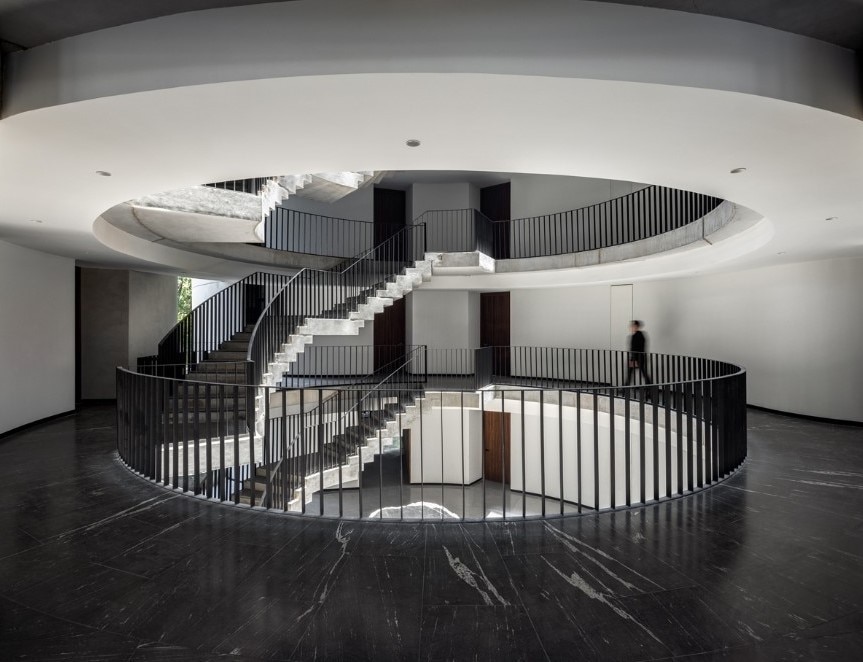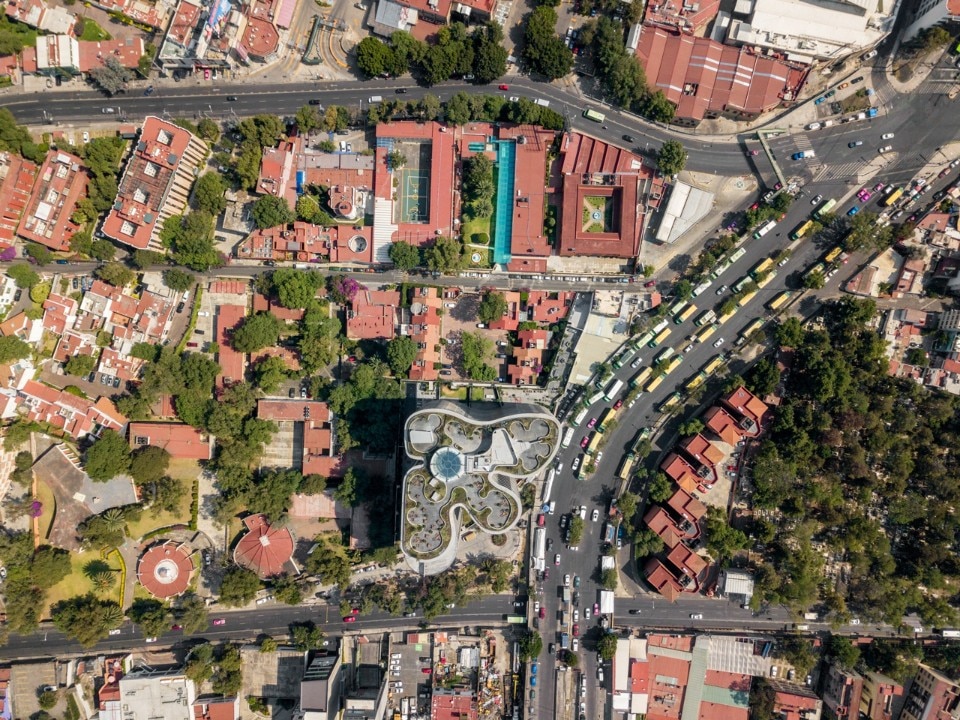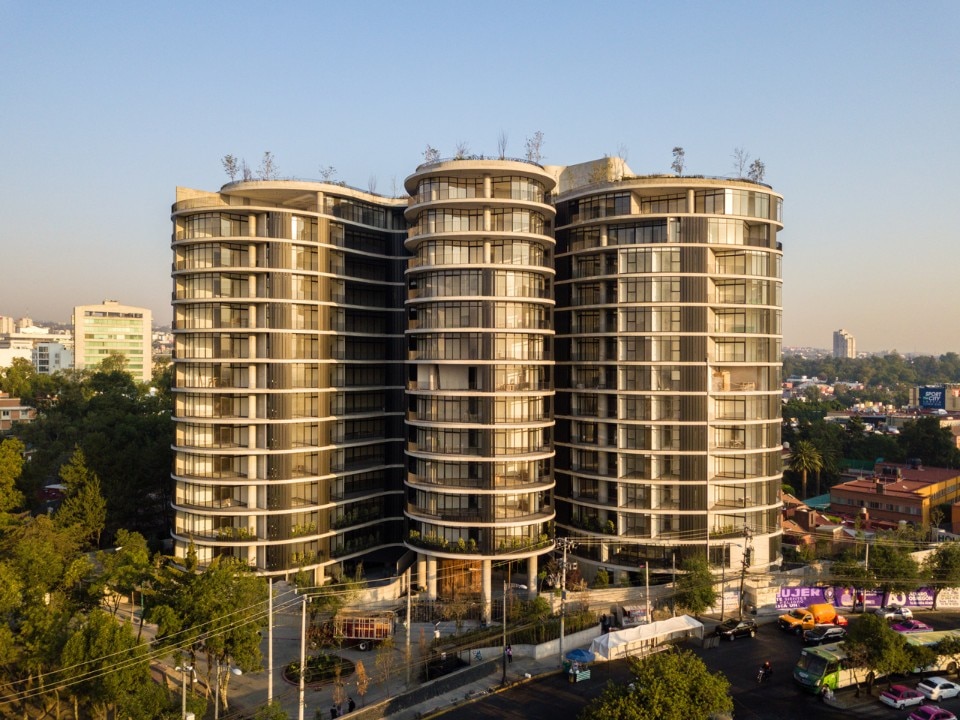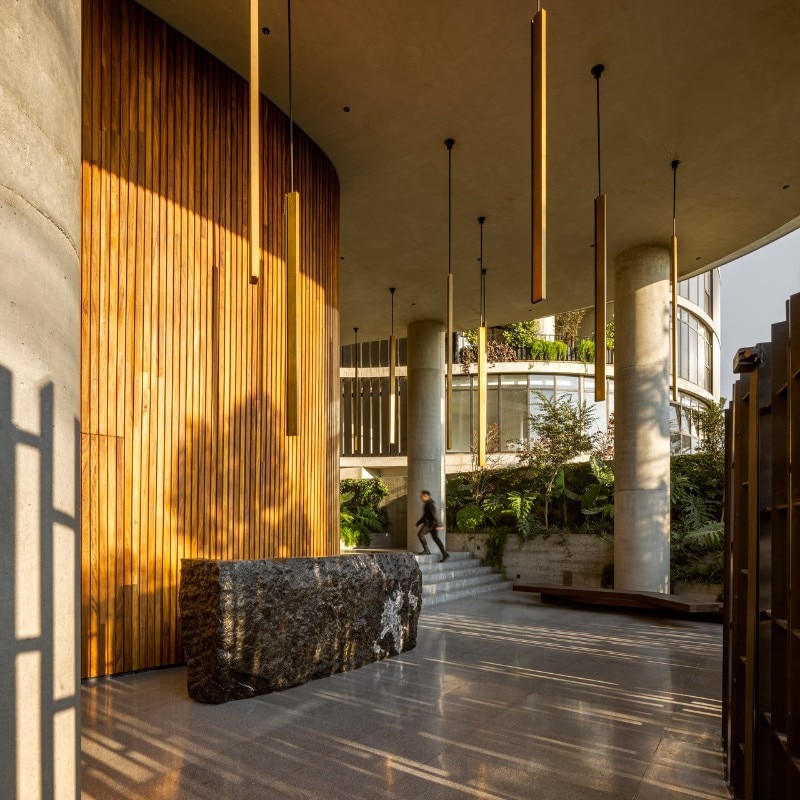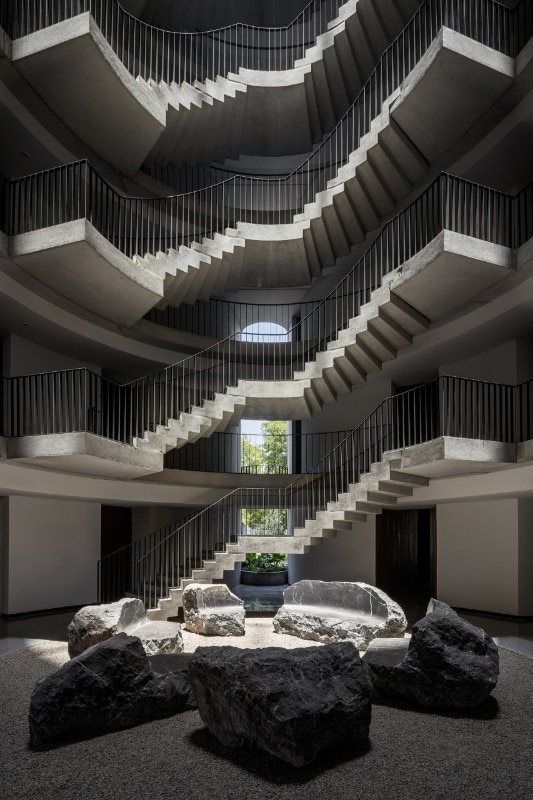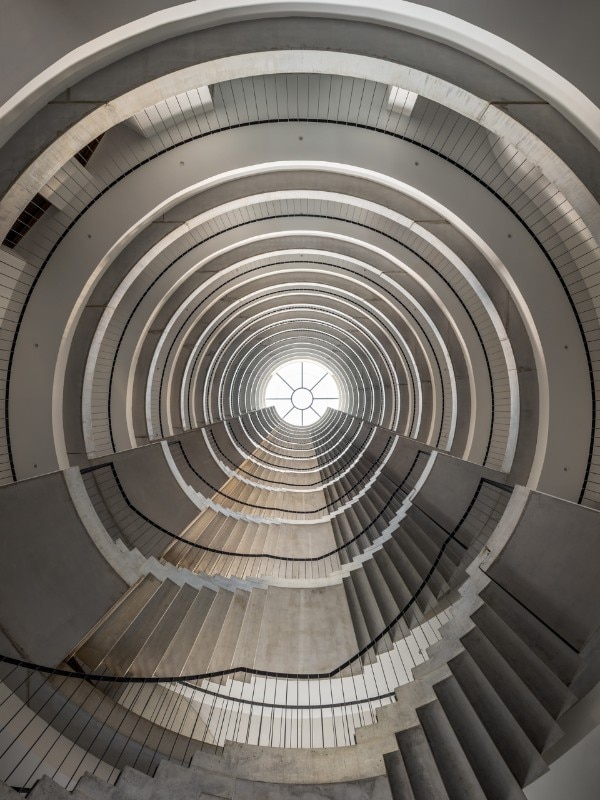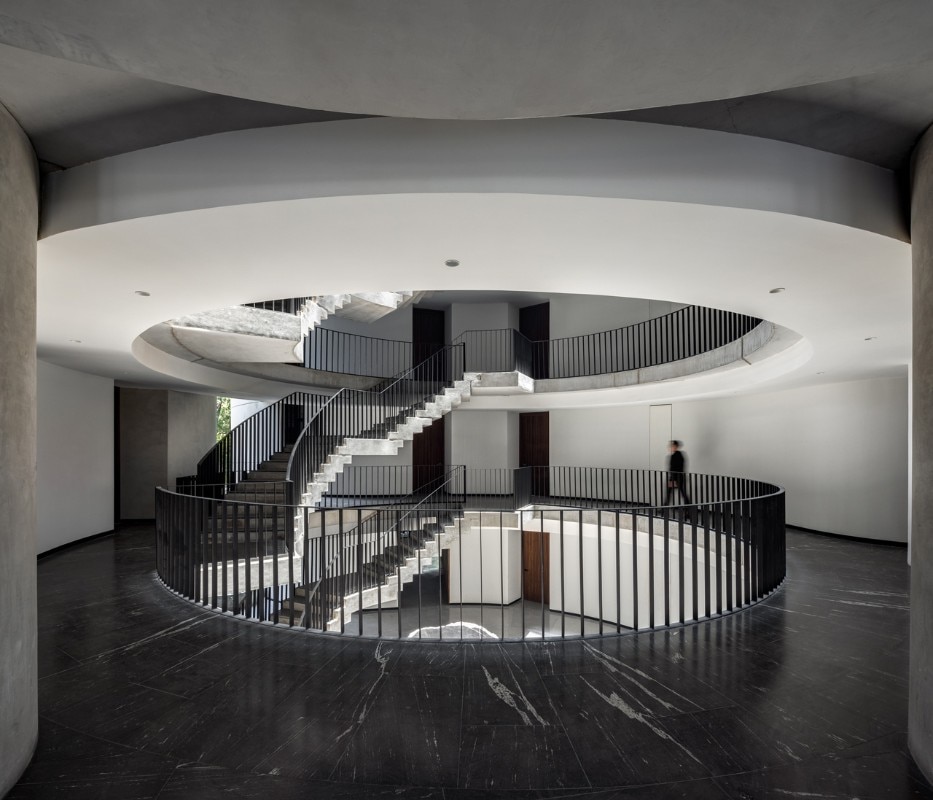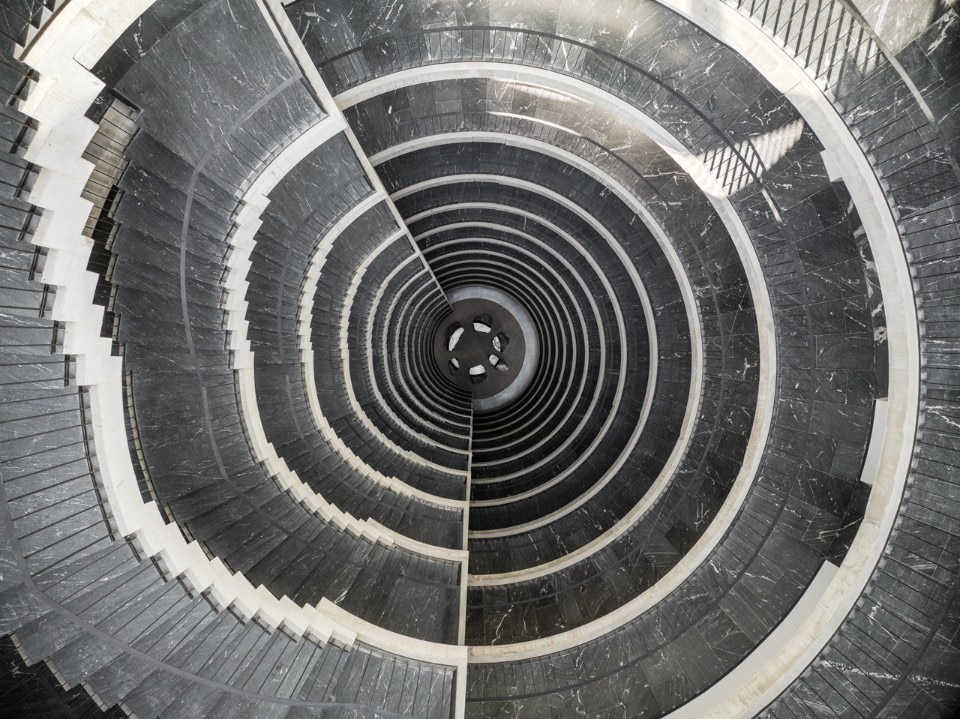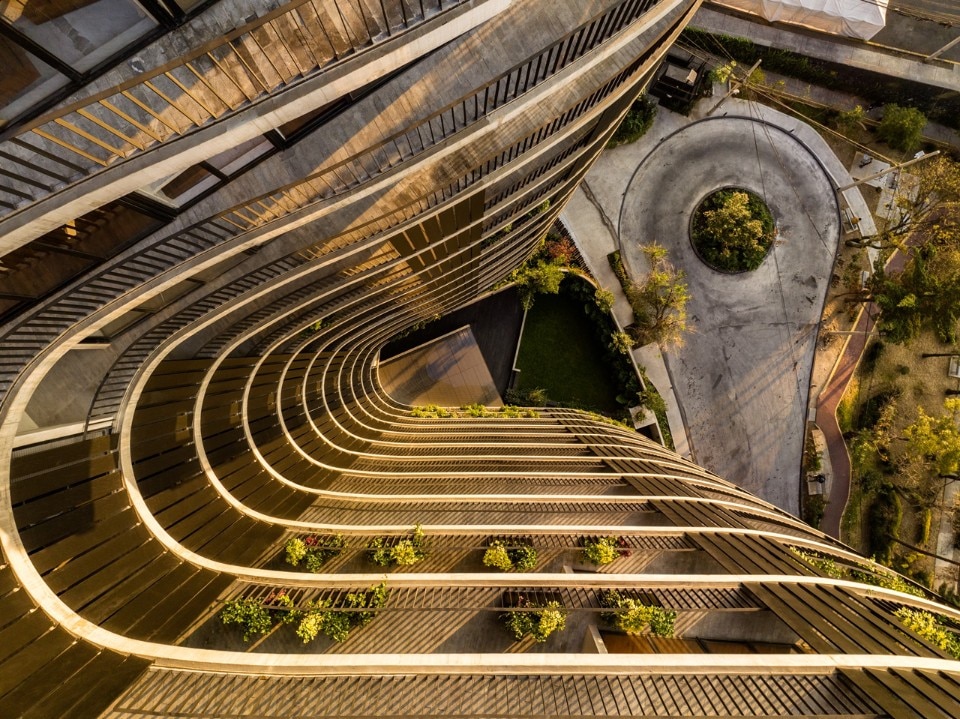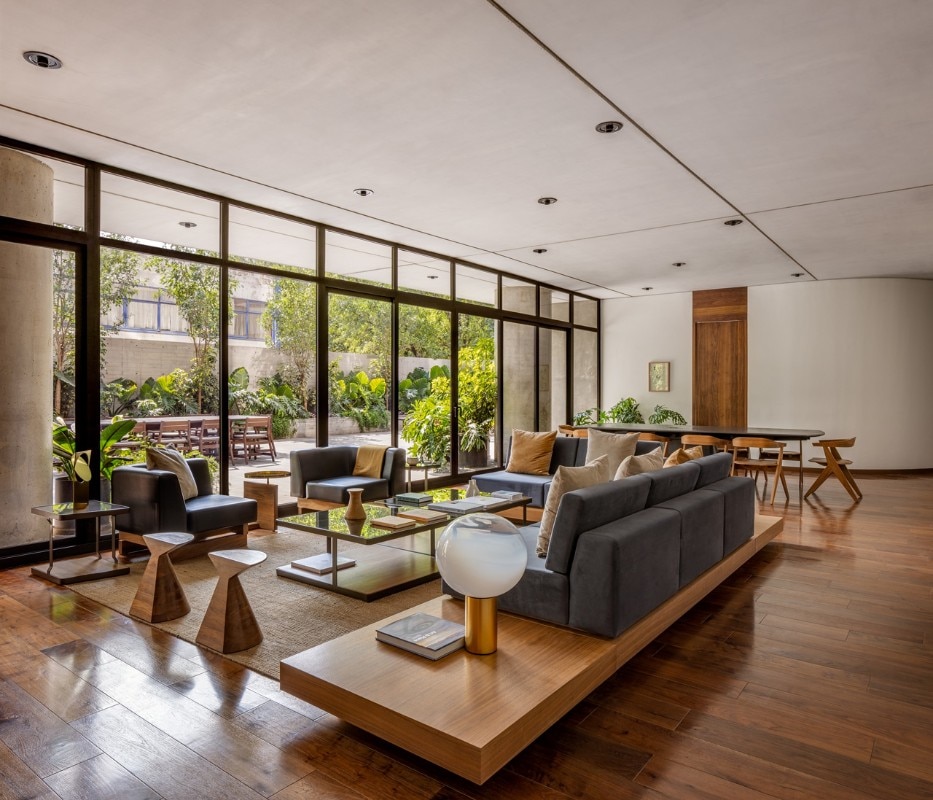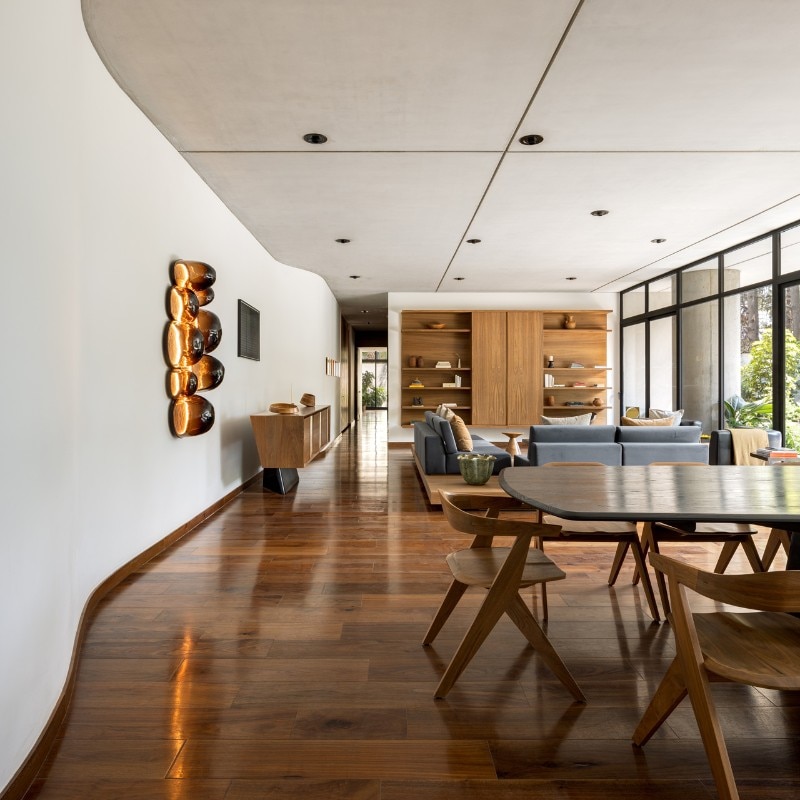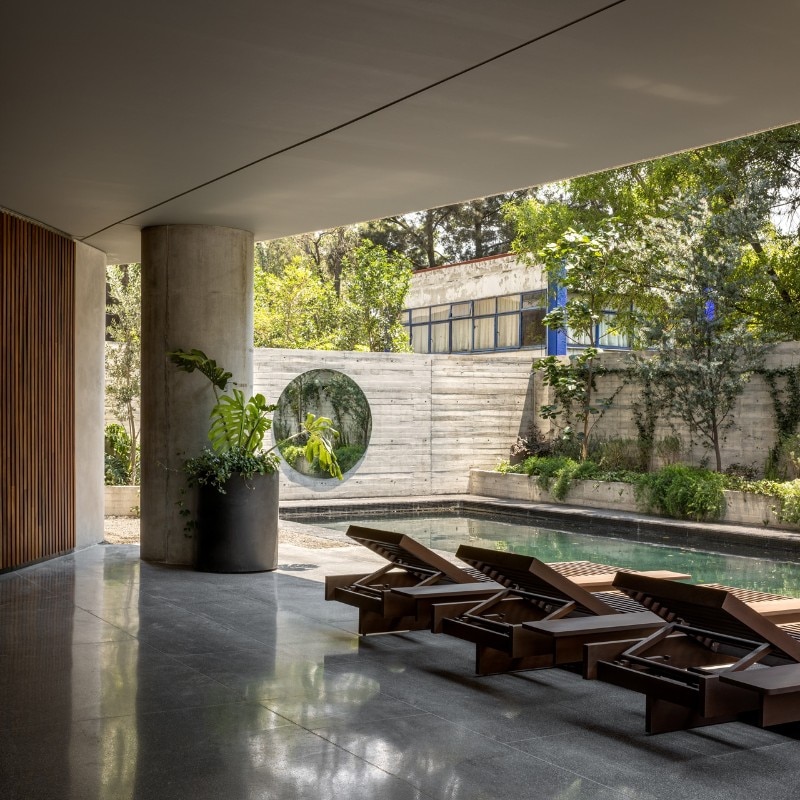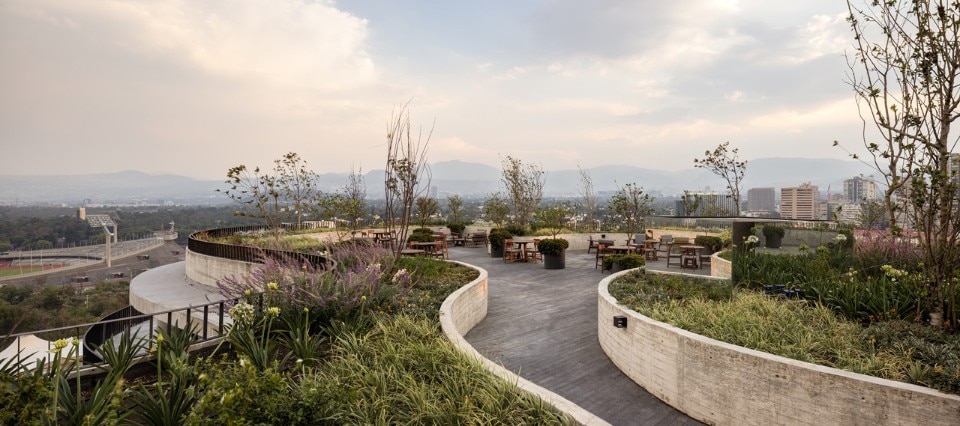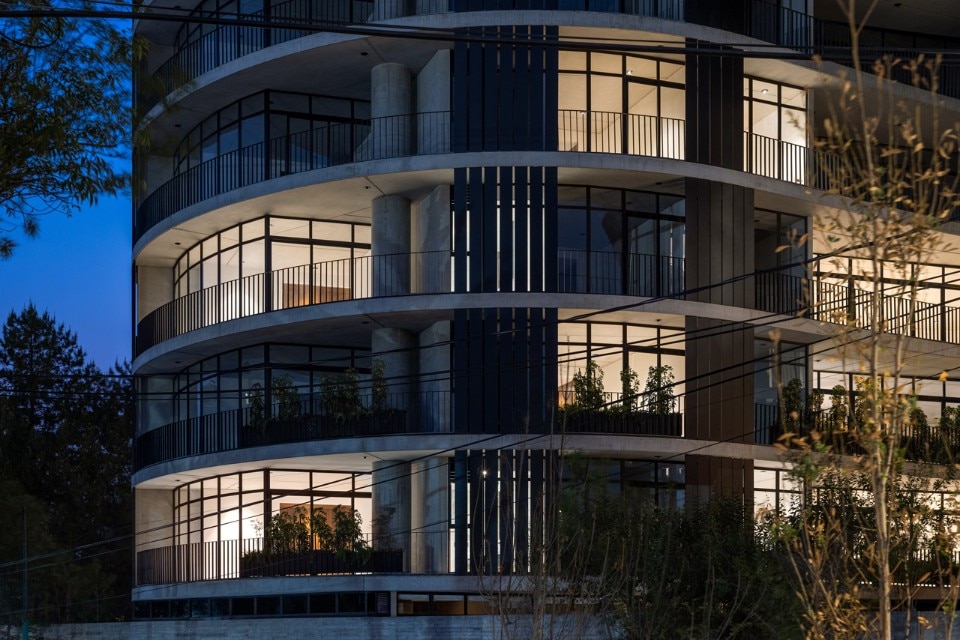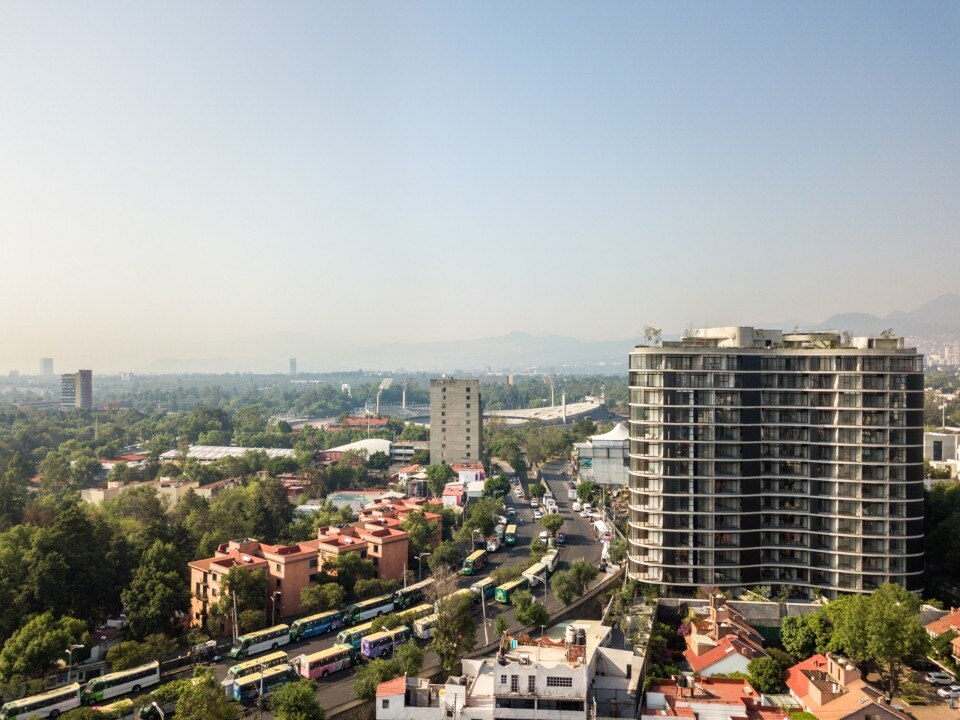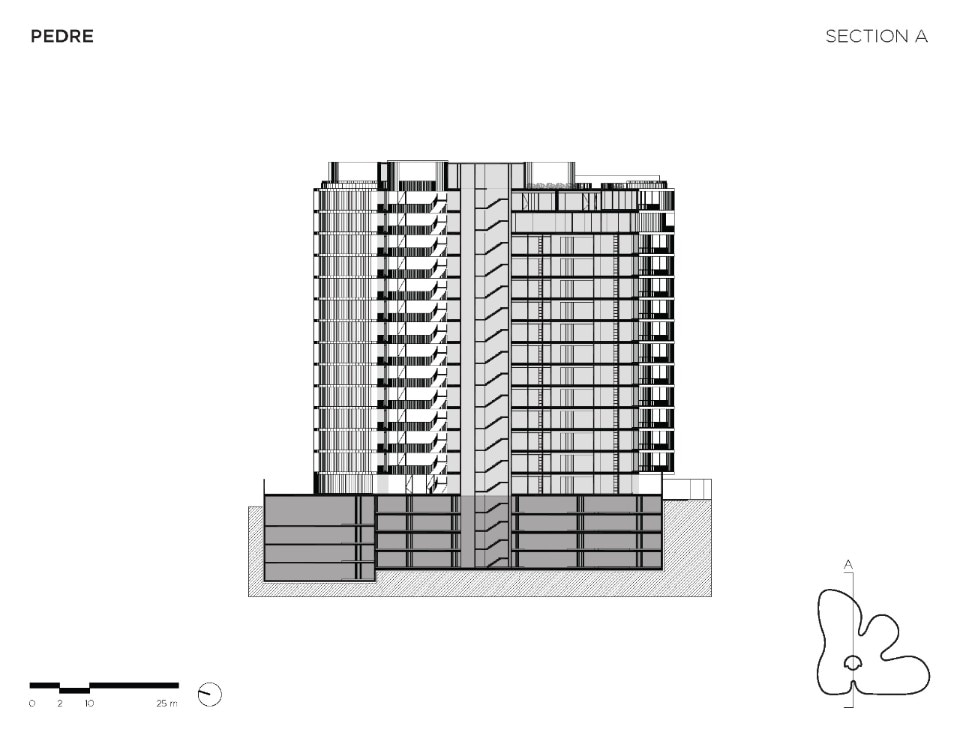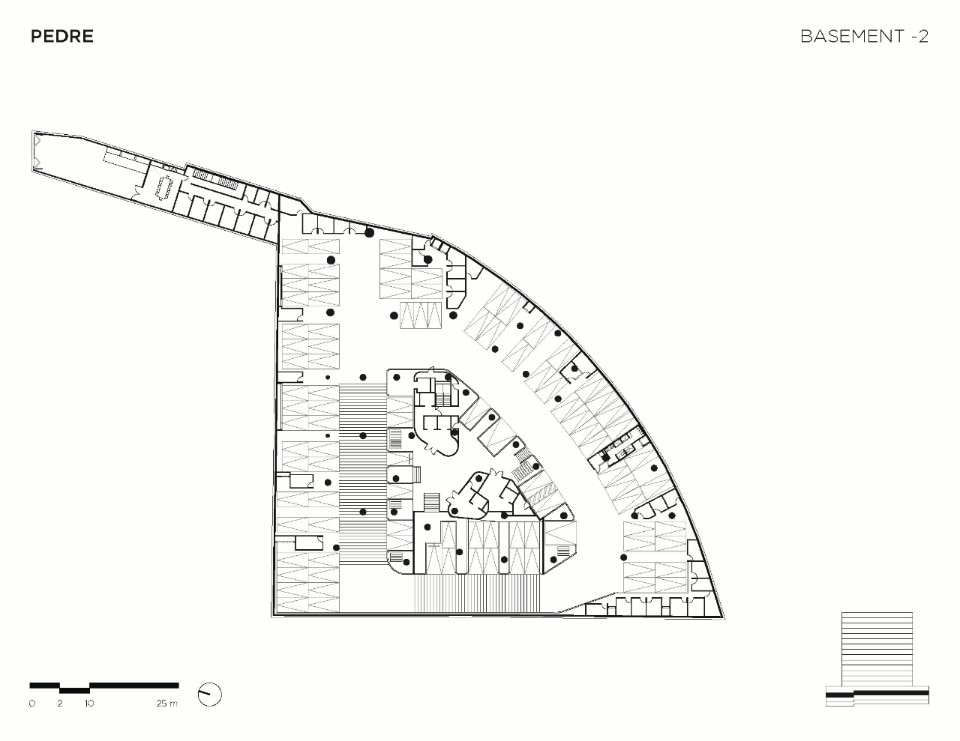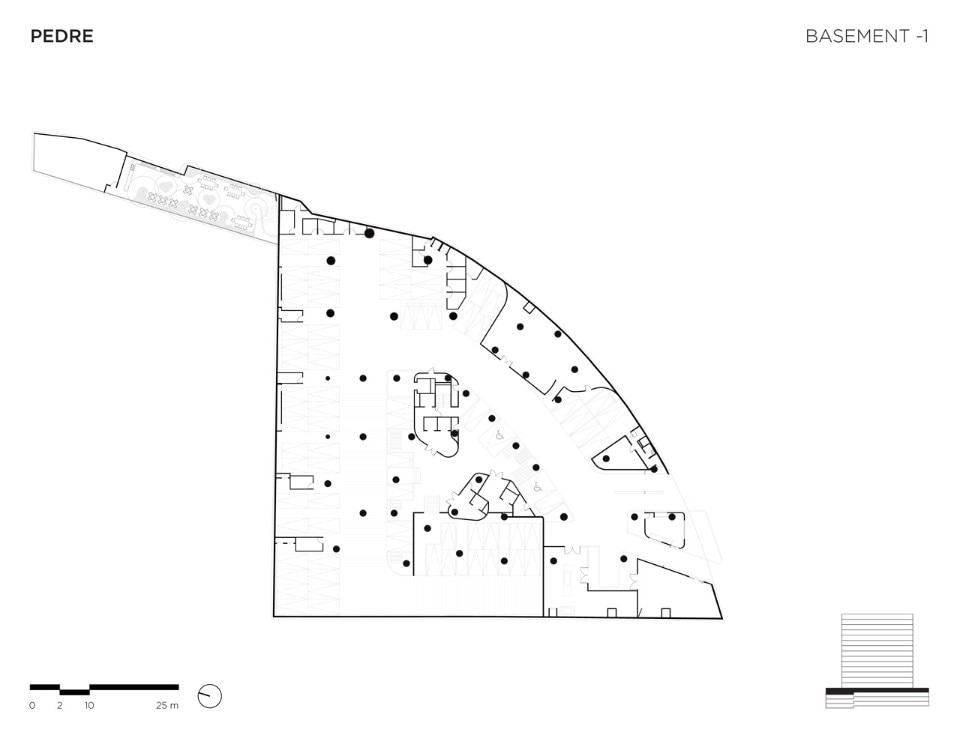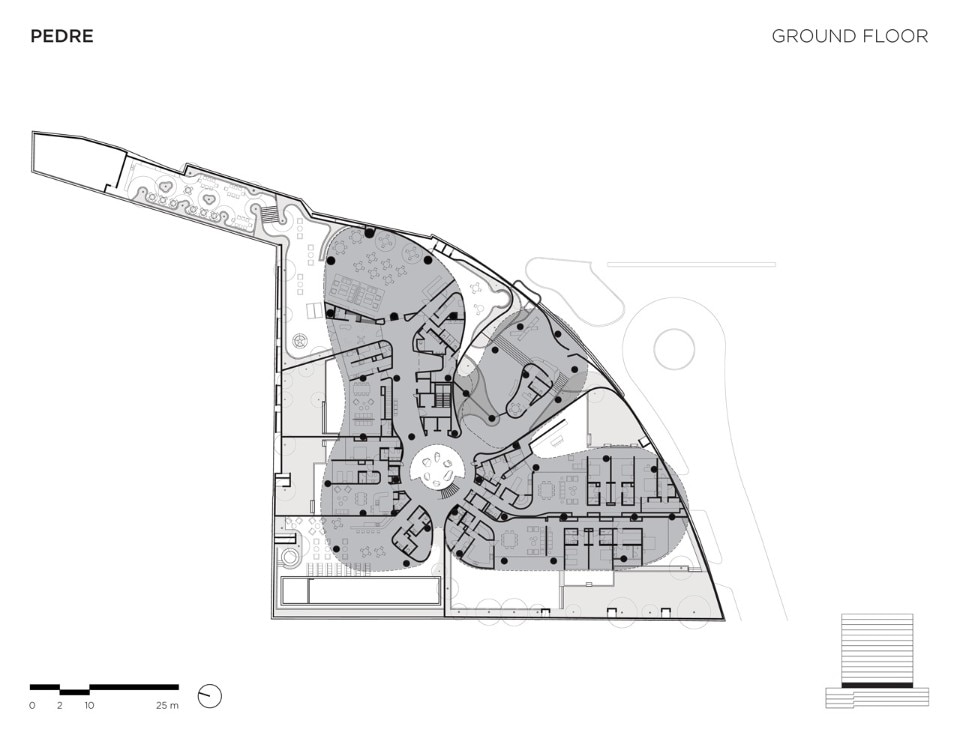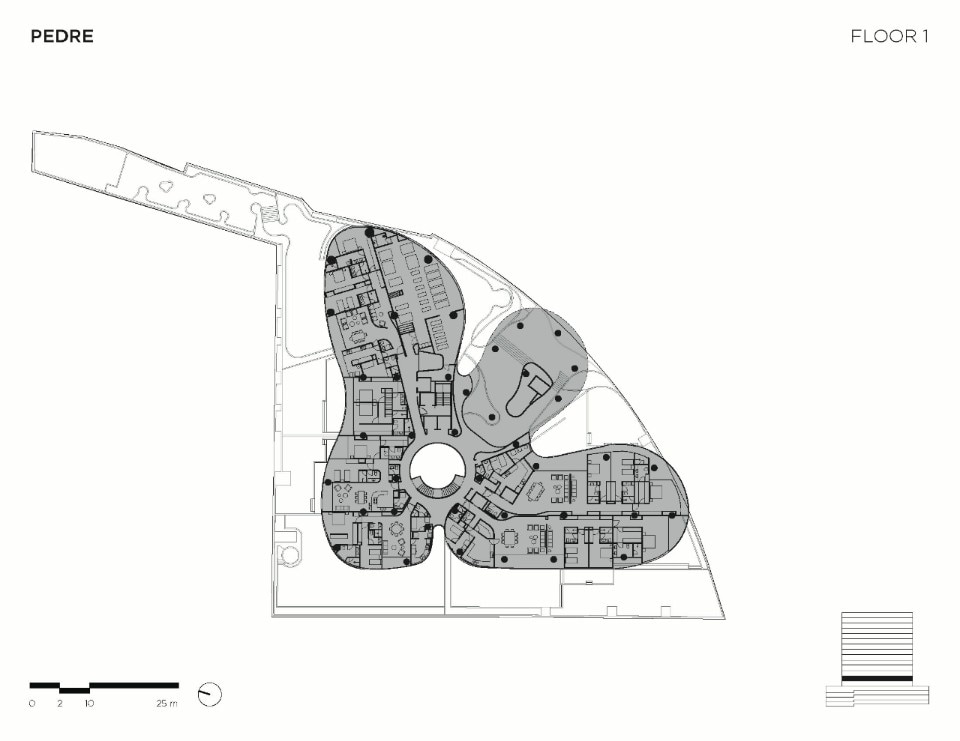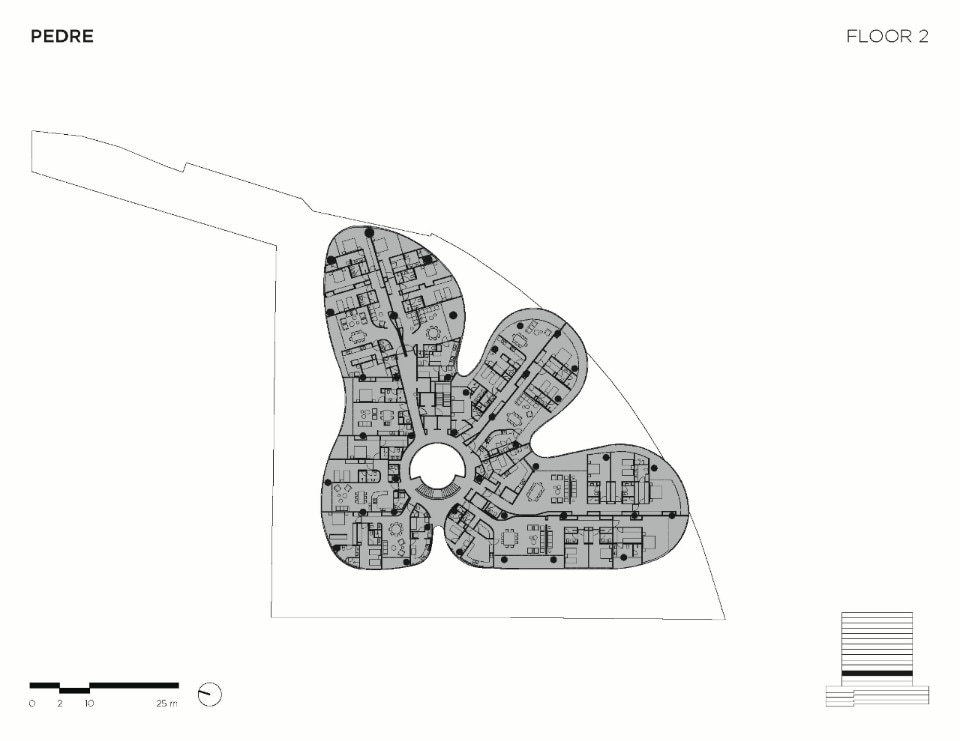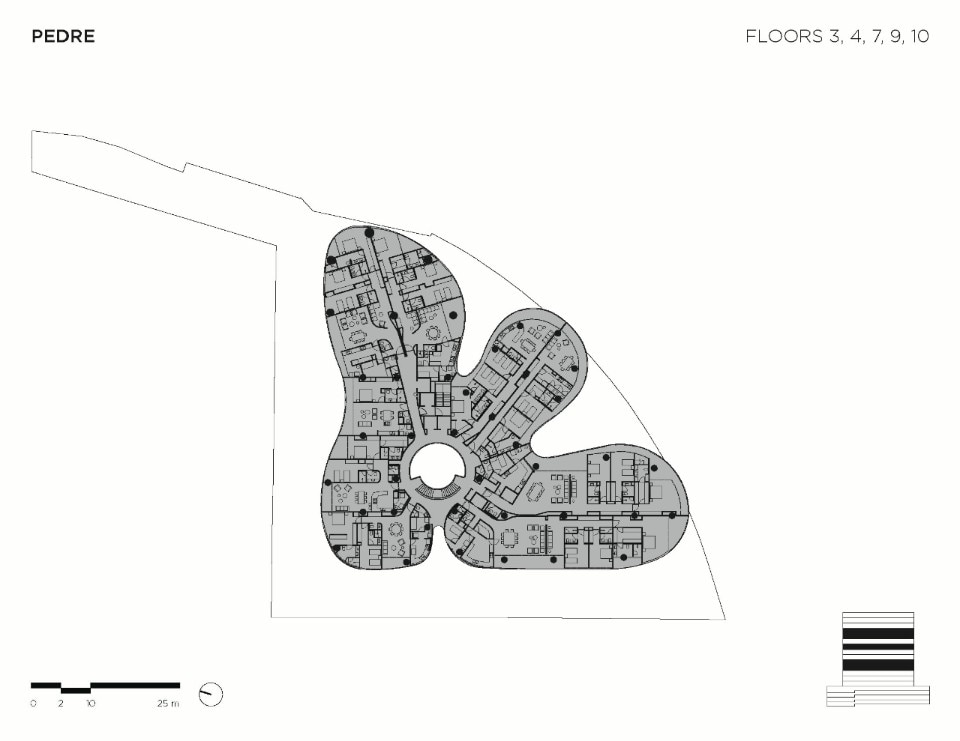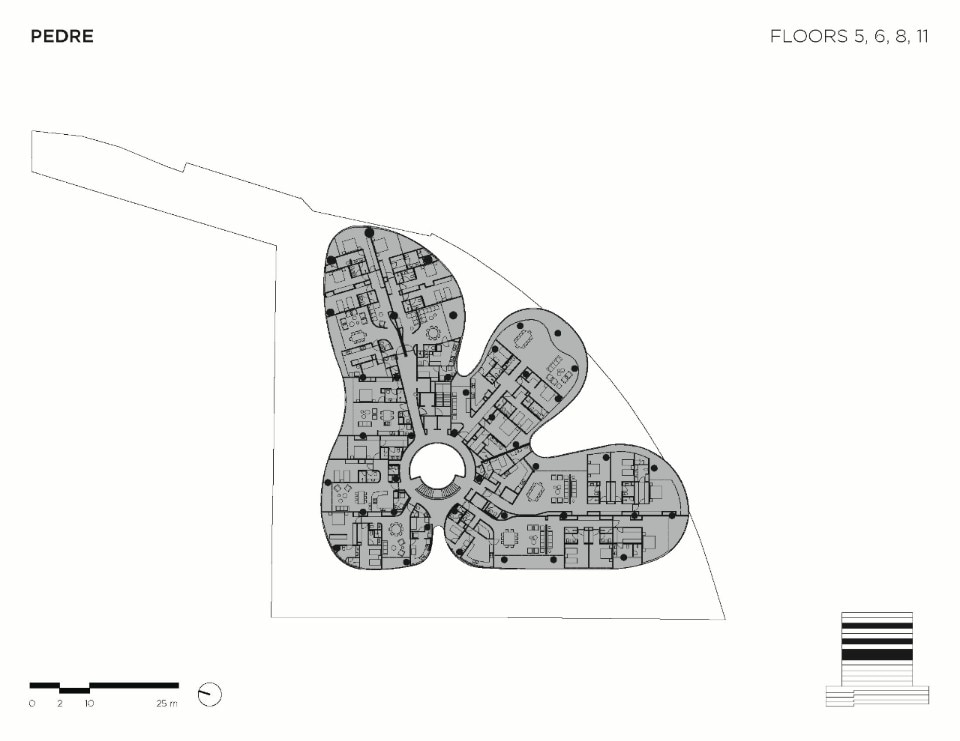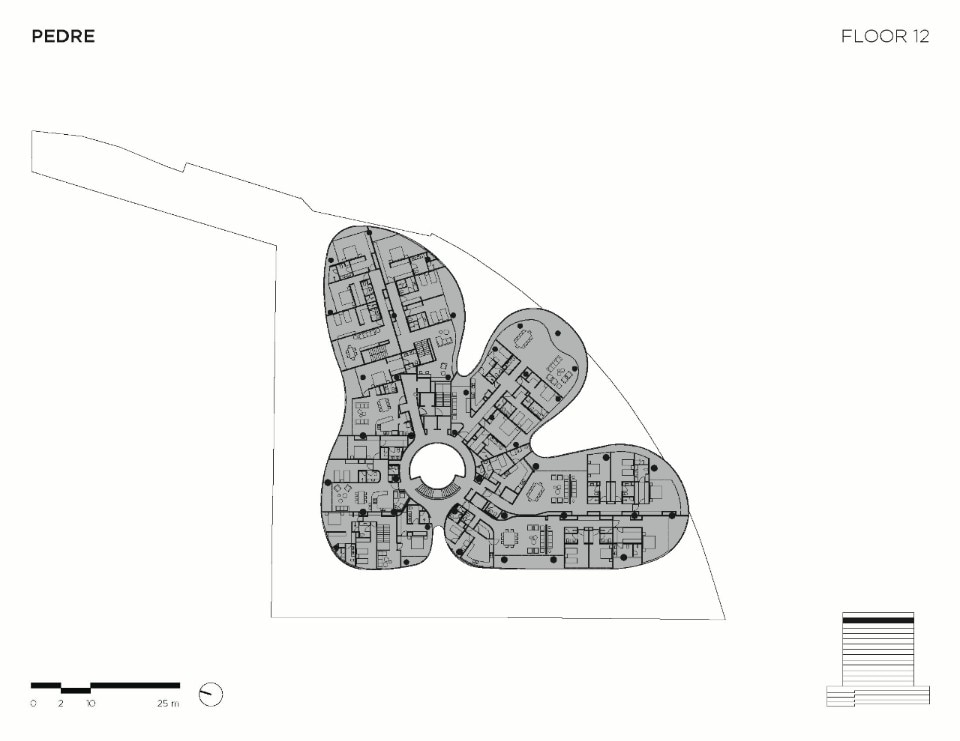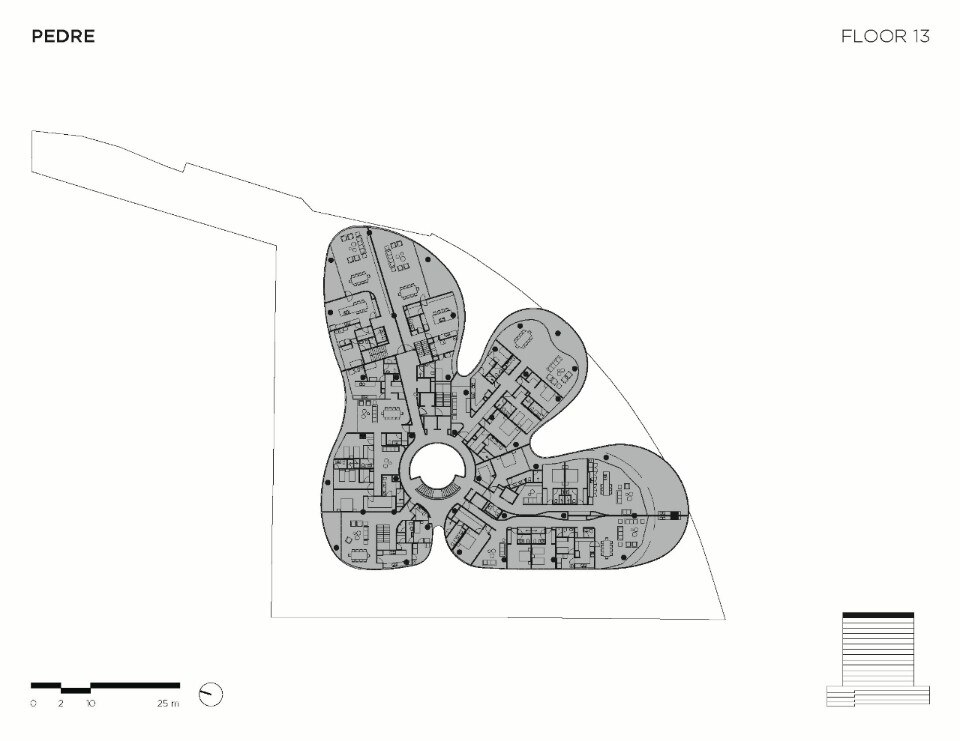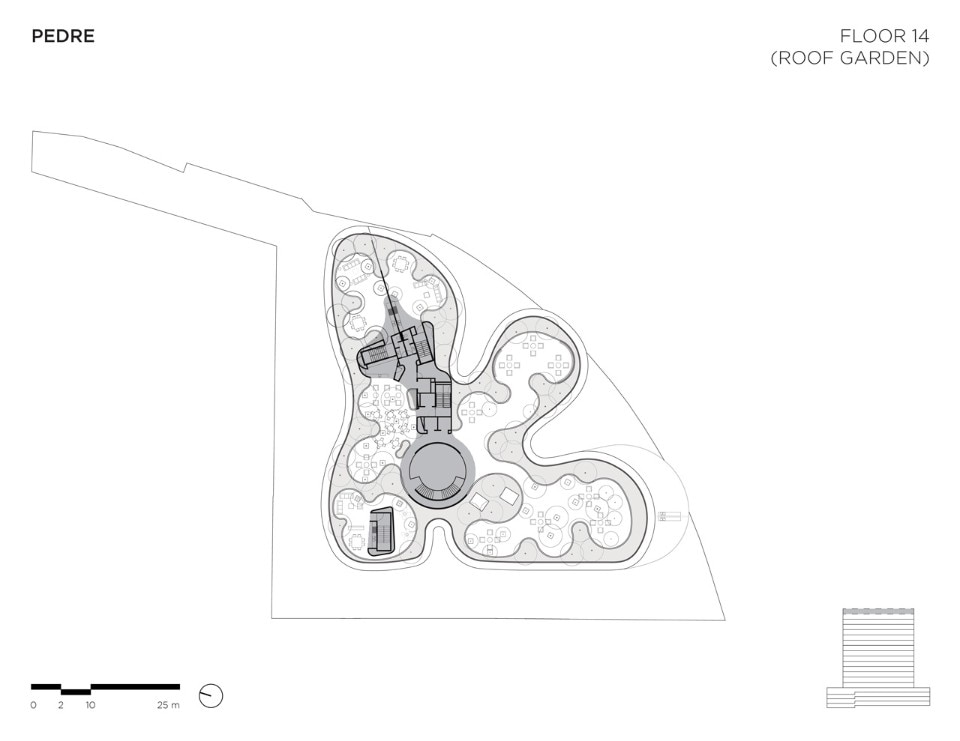The 112 apartments organized on the 15 floors of the new Pedre building represent a new idea of urban community. The project was developed by studio JSA in collaboration with MTA+V on a plot bordered by two large traffic arteries. More than morphological or formal continuity, this architecture seeks alternative relationships with the place and the local design culture. On the one hand, the rejection of geometrical rigidities alludes to the local topography and mountains’ profiles shaped by volcanic eruptions. On the other hand, the sinuosity of the envelope is a reference to some elements of the work by Alvar Aalto and Oscar Niemeyer.
The full-height circular atrium in the center of the building is the principal space, where the distributive corridors and common areas flow: it is designed to host a theatrical pause in the movement to and from the residences. Its vertiginous proportions converge in perspective towards the skylight and the composition of stone monoliths on the floor. The roof garden is divided through flowerbeds into private portions and collective areas, shaded by fruit trees.
The sizes of the apartments vary from 90 to 300 square meters, organized into 18 different types, including single-story, duplex, and triplex units. Despite the great variety, one can recognize the intention to play dramatically between the compression of the serving and secondary spaces and the sudden expansion of the served rooms, especially the living and master bedrooms. The envelope is doubled in many points, creating an in-between space between the enclosure and the shading. These generous galleries and terraces enrich the articulation of the internal and external environments and their mutual relationships.
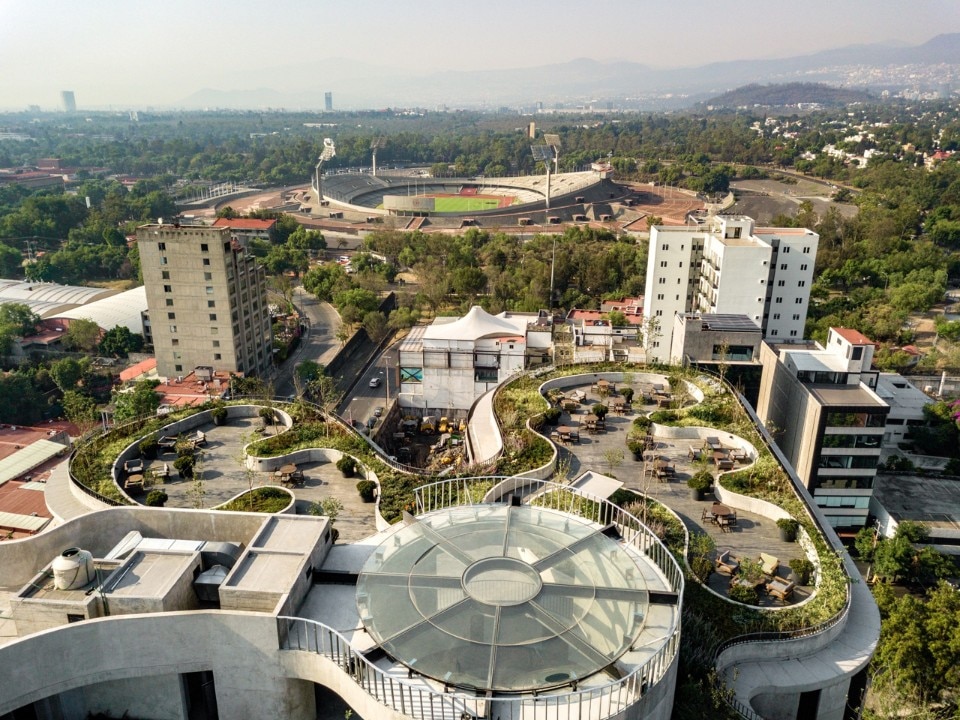
Even the treatment of the mighty pillars reveals particular attention to the perception and functionality of the spaces. Three situations can be distinguished. There are pillars hidden by partitions to equip walls of corridors and hallways. Some pillars intercept or touch the partitions without disappearing, assuming a threshold role in the transition between two areas. There are columns that punctuate the space like freestanding sculptures, qualifying it with their majestic presence. The relationship with the ground is entrusted to a double-height lobby where flowerbeds and water surfaces alternate with stairs, platforms and terraces, determining a variety of possible transitions between city and home.


